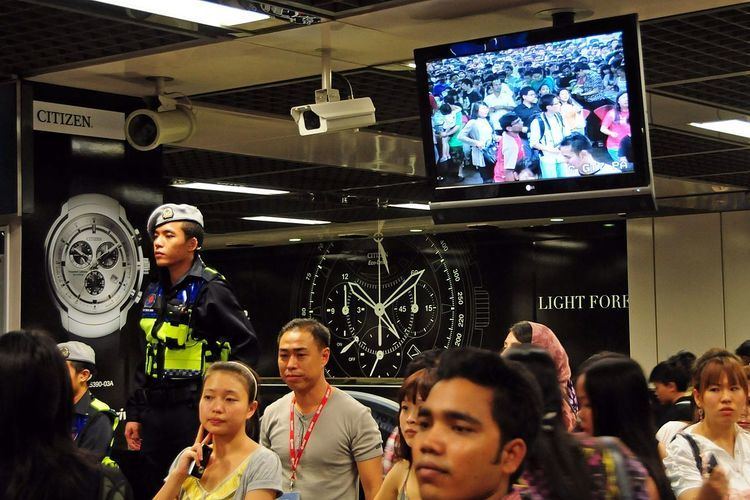 | ||
The Public Transport Security Command (TransCom) Chinese: 公共交通保安指揮處) is a specialised transit police unit of the Singapore Police Force. It was first established as a unit of the Special Operations Command under the name Police MRT Unit in 2005 in response to the need for greater security concerns in public transport operations in Singapore as a result of global security issues. From 15 August 2009, the unit was upgraded into an independent unit and took its present name.
Contents
History
Plans to set up the unit was publicly announced by Minister for Home Affairs Wong Kan Seng during the annual Police Workplan seminar in April 2005. The unit was to be known as the Police MRT Unit (PMU) (Malay: Unit Polis MRT; Chinese: 地铁警卫队) and was part of the Special Operations Command. Officers began operational patrols on the Mass Rapid Transit network from 15 August 2005 amid much media attention, particularly in the wake of the 7 July 2005 London bombings in which Jean Charles de Menezes was killed by Metropolitan Police Service officers in a controversial shoot-to-kill policy adopted there. This issue was also brought up in Parliament on the same day, in which Wong clarified that no such policy is adopted here, although officers are trained to kill if considered necessary as is the standard procedure for the rest of the regular force.
Plans to enlarge the PMU into an independent unit within the SPF was announced in 2008. The transition was completed on 15 August 2009 when the unit was upgraded took its present name, reflecting its expanded role to police the entire public transportation network in Singapore. It has since shifted from its current base at Queensway Base to the former Geylang Police Divisional Headquarters building at the end of 2009.
Manpower and equipment
TransCom draws its manpower from the regular as well as the conscript full-time national servicemen (NSF) resources, with the build of officers amongst the selection criteria. Taller and well-built officers are chosen to project a tougher presence. Officers are trained to conduct policing work in confined and crowded spaces, and are familiarised with the MRT system's operations. In 2007, the unit began to include Volunteer Special Constabulary officers in its ranks.
Each TransCom officer is armed with a service revolver and T-baton, as is the case for regular officers. Heavier weaponry commonly used by officers in other SOC units are deemed inappropriate for use in the confined and often crowded spaces of the MRT network. Officers are dressed in the new tactical uniforms similar to those worn by Police Tactical Unit officers, but initially wore blue-coloured berets. From 30 December 2009, they wore light-grey coloured berets, both to signify their distinction as an independent department, and to increase visibility operationally.
Operations
TransCom officers currently operate in pairs or larger groups in and around stations and trains on the MRT network. These patrols, which may include the inspection and searching of suspicious packages and persons, are deliberately kept random to retain an element of surprise for greater operational effectiveness.
Initially deployed only on the MRT system, TransCom officers now have their area of operations extended to the bus interchanges and terminals, which were previously patrolled by Neighbourhood Police Centre officers.
